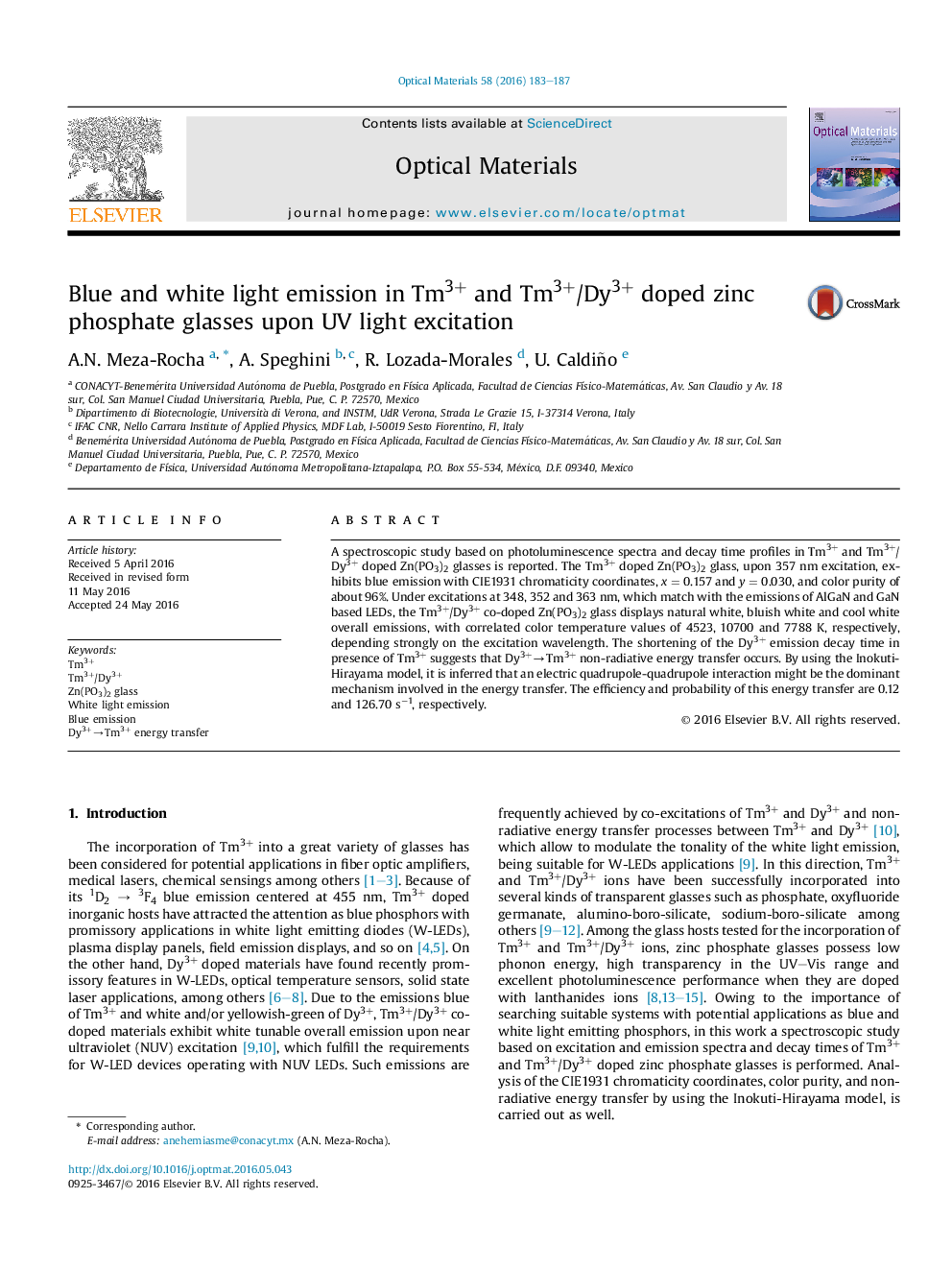| Article ID | Journal | Published Year | Pages | File Type |
|---|---|---|---|---|
| 7908547 | Optical Materials | 2016 | 5 Pages |
Abstract
A spectroscopic study based on photoluminescence spectra and decay time profiles in Tm3+ and Tm3+/Dy3+ doped Zn(PO3)2 glasses is reported. The Tm3+ doped Zn(PO3)2 glass, upon 357 nm excitation, exhibits blue emission with CIE1931 chromaticity coordinates, x = 0.157 and y = 0.030, and color purity of about 96%. Under excitations at 348, 352 and 363 nm, which match with the emissions of AlGaN and GaN based LEDs, the Tm3+/Dy3+ co-doped Zn(PO3)2 glass displays natural white, bluish white and cool white overall emissions, with correlated color temperature values of 4523, 10700 and 7788 K, respectively, depending strongly on the excitation wavelength. The shortening of the Dy3+ emission decay time in presence of Tm3+ suggests that Dy3+âTm3+ non-radiative energy transfer occurs. By using the Inokuti-Hirayama model, it is inferred that an electric quadrupole-quadrupole interaction might be the dominant mechanism involved in the energy transfer. The efficiency and probability of this energy transfer are 0.12 and 126.70 sâ1, respectively.
Related Topics
Physical Sciences and Engineering
Materials Science
Ceramics and Composites
Authors
A.N. Meza-Rocha, A. Speghini, R. Lozada-Morales, U. Caldiño,
